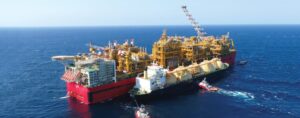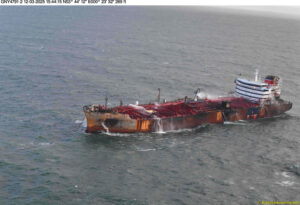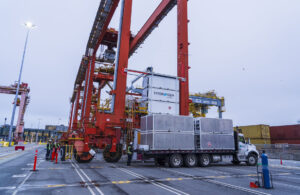Accidental Button Push Could Cause Diver Fatalities
National Offshore Petroleum Safety and Environmental Management Authority (NOPSEMA) revealed a recent incident where a vessel lost position while diving activities were being conducted approximately 130 metres from a hydrocarbon facility offshore Western Australia.
According to report, the loss of position was caused by a deactivation of the forward/aft automatic positioning function by unintentionally deselecting the ‘surge’ button on the DP (Dynamic Position) console located on the bridge which then deactivated the ‘auto position’ mode.
The deselection was thought to have occurred by the placement of a notepad on the side of the console. The vessel drifted off location by over 40 metres and this drift was initially noticed by a diver when his umbilical started to become taut.
Once the DPO (Dynamic Position Operator) became aware of the excursion, the ‘auto position’ mode was reactivated causing the vessel to stop moving and remain in position. During this time, the diver had followed his umbilical, moved clear of any obstacles, and walked with the vessel, said NOPSEMA in its safety alert.
A loss of position during diving could cause diver fatalities if their umbilicals or other equipment becomes entangled or snagged on subsea infrastructure during the excursion. A loss of position whilst working in close proximity to a hydrocarbon facility could also potentially cause a collision, leading to a loss of hydrocarbon containment and subsequent fire or explosion. In both cases the consequences could involve multiple fatalities.
NOPSEMA’s investigation identified that the auto DP mode buttons (Surge, Sway and Yaw) were located in the left hand corner of the console next to desk space commonly used for completing DP related checklists and logs. Consequently, these buttons were susceptible to accidental activation by personnel.
The inspectors found that although the incident arose by an accidental and unknowing double press of a button by the DPO, the design of the DP system allowed a human error to escalate this act into a dangerous occurrence by neither requiring any positive confirmation of deactivation of ‘auto position’ mode nor providing any alarm that required acknowledgment that ‘auto position’ mode had been de‐activated.
The situation was exacerbated and recovery impeded as deselecting the ‘surge’ button automatically deactivates the excursion alarms in that axis and the DP display was no longer providing useful feedback in terms of the loss of position event as the excursion rings started to track with the vessels movement.
If either of the controls identified above were in place, it is unlikely the incident would have escalated to a loss of position event. In order to rectify the issue the operator, with assistance from the manufacturer, are currently upgrading the control systems software to provide a separate dialogue box confirmation requirement when deactivating the ‘auto position’ mode.
Source: NOPSEMA








